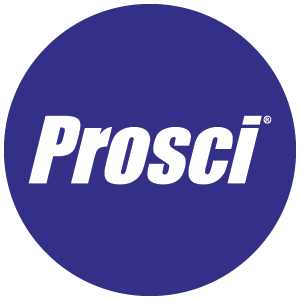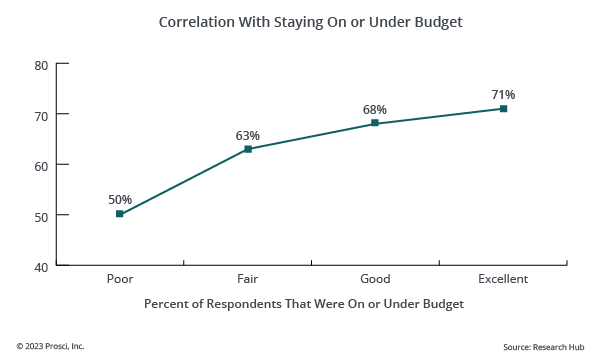Organizational Change Management Executive Education: What You Need to Know

5 Mins
Updated: October 30, 2025
Published: May 5, 2025

When considering executive education in change management, there are many options out there to choose from. How do you know which program will give you what you need to meet your goals? Here’s an overview.
Change management executive education equips senior leaders with the skills to lead transformation by focusing on leadership, not just technical execution, as the key to lasting change. These programs focus on three critical areas:
- Leadership: Understanding the executive’s role as a sponsor of change and learning how an organization drives adoption by engaging and aligning stakeholders across all levels of the organization.
- Strategy: Developing the ability to anticipate disruption, evaluate organizational change readiness, and integrate the people side of change with broader business objectives.
- Education: Building a foundational understanding of change management principles, such as the Prosci ADKAR® Model and 3-Phase Process, and applying those principles to real organizational challenges.
These programs create space for executives to reflect on their leadership approach, identify barriers to success, and learn how to build organizational resilience through change.
The Role of the Executive in Change Management
Executives are central to the success of any change effort. Their role is to set the vision and direction, foster a culture of adaptability, and ensure that change strategies align with organizational goals. A clear vision aligns teams, while a culture of flexibility and learning enables change to take root.
Prosci research identifies the ABCs of Sponsorship as the most critical executive behaviors for successful change:
- Actively and visibly participate throughout the project lifecycle
- Build a coalition of sponsorship across the organization
- Communicate, support, and promote the change to all impacted groups
Key Components of Executive Education Programs in Change Management
Program content
A strong executive education program in change management should go beyond surface-level concepts. Look for a curriculum that prepares leaders to sponsor change, align strategy, and build resilience. A strong program should also support both the implementation and sustainment of change initiatives, preparing executives to lead change at scale.
Change toolkit
The best executive education experiences provide not just theory, but proven frameworks and tools that can be used in real time. These should include stakeholder engagement strategies, structured methodologies, and metrics for tracking and evaluating change effectiveness, as these tools can be applied immediately within the organization.
Faculty and expertise
Executive education programs should be led by seasoned industry practitioners and thought leaders. This combination brings both real-world relevance and research-backed insight. Case studies, peer discussions, and applied learning should be core to the experience, helping leaders apply lessons to real-world challenges with organizational change.

Frameworks in Change Management Education
Many executive education programs incorporate basic frameworks to help leaders understand basic concepts in organizational change. Common frameworks you might find in a foundational program include the 5 C’s, 5 R’s and 5 P’s:
5 C’s of change management
A 5 C’s framework focuses on the interpersonal aspects of change. The meaning of the 5 C’s varies widely depending on the organization using it, the educational program teaching it, and the change management methodology it’s part of.
In organizational change, the C’s can represent a variety of factors, including Catalyst, Context, Clarity, Commitment, Competence, Capability, Communication, Culture, Conviction, Collaboration and Consistency.
A basic framework like this does not constitute a specific methodology with a structured process. However, the 5 C’s can help change leaders understand broadly the areas they need to consider during an organizational change.
5 R’s of change management
The 5 R’s help organizations define and customize the change management approach for a specific initiative. They focus on key components that need to be assessed and addressed to ensure successful change implementation. The 5 R's are:
- Risk – Understanding the potential risks associated with the change, including its impacts
- Resistance – Identifying potential resistance to the change and planning strategies to address it
- Resources – Determining the required personnel, budget, time and other means for managing the initiative
- Roles – Defining the roles of key people involved in the change process, including sponsors, managers, and impacted employees
- Roadmap – Outlining the steps and activities needed to successfully implement the change, including timelines and milestones
5 P’s of change management
This framework typically aims to help organizations align key people, facilitate engagement, and guide change management planning:
While there can be variations in what the 5 P's represent, they typically include:
- Project – The specific change initiative or project that is being undertaken.
- Purpose – The reason for the change, including the objectives and desired outcomes.
- Particulars – The specific details of what is changing, including processes, systems, or behaviors.
- People – The individuals or groups who will be impacted by the change and who need to adapt to new ways of working.
- Performance – The metrics or indicators that will be used to measure the success of the change initiative.
Like the other frameworks, the 5 P's of change management vary. For example, Prosci uses a 4P’s exercise in change initiatives and addresses the fifth P, Performance, within other areas of the detailed, strategic Prosci Methodology.
The 5 C’s, 5 R’s and 5 P’s are not comprehensive change management methodologies, strategies or processes. However, broad frameworks like these are helpful for building an understanding of change management and its complexities.
Benefits of Change Management Executive Education
When executives deepen their understanding of change dynamics, they can align goals with implementation and gain the skills to lead through uncertainty. These programs empower leaders to navigate complex challenges with clarity and foresight, so their organizations can adapt and thrive.
Foundational programs are not enough to equip a change leader to make critical decisions about their organization’s changes and ensure successful outcomes, including ROI. To address the complexities of change, our role-based programs are designed to address the unique needs of the people affected by organizational changes, and equip them to fulfill their critical roles in implementing changes successfully.
Leaders and stakeholders: Taking Charge of Change
This foundational workshop helps leaders, project teams, and others build a shared understanding of change management. Participants learn key concepts using the Prosci ADKAR® Model and apply them to real initiatives. The result is increased awareness and motivation to support change effectively across the organization.
People managers: Leading Your Teams Through Change
Designed for people managers, this program provides practical tools to lead teams through change. Using the Prosci ADKAR® Model and the CLARC roles, managers gain the confidence to communicate, support, and coach employees through transition—building resilience and improving team outcomes.
Senior leaders: Change Management Sponsor Briefing
Created for executives and senior leaders, this session clarifies how effective sponsorship requires active, visible leadership aligned with strategy. Using Prosci frameworks, leaders learn how to guide change, mitigate risks, and connect sponsorship efforts to measurable results.
Sponsors of change: Strategic Alignment Workshop
This facilitated session is designed to help leadership teams define a clear direction for enterprise change capability. Led by Prosci’s Advisory Services team, it aligns resources to goals and sets a practical timeline for execution. This workshop is especially valuable in complex organizations or when rapid, effective change is a strategic priority. It accelerates planning and ensures change capability becomes a focused, actionable initiative.
Leaders and sponsors: Leadership Coaching
One-on-one coaching equips executives with practical, research-backed strategies to lead change confidently. Tailored to your organization’s unique context, it helps leaders guide teams and apply change management insights to high-impact initiatives or long-term capability building.
Who is Executive Education in Change Management For?
When organizations need to succeed with critical changes like ERP systems and AI adoption, foundational concepts won’t do. They need training in structured, scalable, actionable approaches proven to drive successful change and build change capabilities.
For 25 years, Prosci’s research on change management best practices has shown that organizations applying excellent change management achieve significantly higher levels of success.

Prosci’s change management courses equip key roles for change success:
- Senior leaders who are responsible for setting vision, aligning strategy, and building a culture of adaptability.
- Executive sponsors leading critical initiatives such as mergers, acquisitions, and digital transformations.
- People managers who serve as the front line of communication and support for teams navigating change.
- Change agents in HR, operations, or strategy roles who are tasked with driving adoption and maintaining successful transformation across functions.
Tips for Finding the Right Program for You
When choosing an executive education program, look for offerings tailored to your role and aligned with your organization’s specific challenges. The right program should offer practical tools, relevant insights, and support your ability to lead change effectively.
Organizations that prioritize change done right know transformation requires planning, leadership, and the right education. Many partner with Prosci because our role-based, research-backed programs help leaders build capability and sustain lasting results.
Leading Change Starts at the Top
Change succeeds when it’s led well. Executive education in change management equips leaders with the confidence, clarity and tools to lead through disruption. These programs go beyond theory, helping executives, sponsors, and managers strengthen their ability to deliver real results. As pressure to evolve grows, those who lead with purpose and proven strategies will turn change into lasting value.




